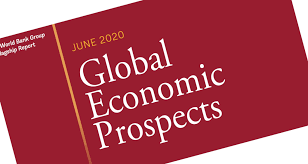
https://www.worldbank.org/en/topic/poverty/brief/projected-poverty-impac...
Poverty projections suggest that the social and economic impacts of the crisis are likely to be quite significant. Estimates based on growth projections from the June 2020 Global Economic Prospects report show that, when compared with pre-crisis forecasts, COVID-19 could push 71 million people into extreme poverty in 2020 under the baseline scenario and 100 million under the downside scenario. As a result, the global extreme poverty rate would increase from 8.23% in 2019 to 8.82% under the baseline scenario or 9.18% under the downside scenario, representing the first increase in global extreme poverty since 1998, effectively wiping out progress made since 2017. While a small decline in poverty is expected in 2021 under the baseline scenario, projected impacts are likely to be long-lasting.
The number of people living under the international poverty lines for lower and upper middle-income countries – $3.20/day and $5.50/day in 2011 PPP, respectively – is also projected to increase significantly, signaling that social and economic impacts will be widely felt. Specifically, under the baseline scenario, COVID-19 could generate 176 million additional poor at $3.20 and 177 million additional poor at $5.50. This is equivalent to an increase in the poverty rate of 2.3 percentage points compared to a no-COVID-19 scenario.
A large share of the new extreme poor will be concentrated in countries that are already struggling with high poverty rates and numbers of poor. Almost half of the projected new poor will be in South Asia, and more than a third in Sub-Saharan Africa. Under the baseline scenario, the number of extreme poor in IDA, Blend and FCV countries is projected to increase by 21, 10 and 18 million, respectively.
The increase in the extreme poverty rate and number of extreme poor are projected to be significantly higher under both the baseline and downside scenario if inequality were to increase as a consequence of the crisis. For instance, a 1% increase in the Gini coefficient (on the upper side of the experience of previous pandemics2) would translate into an additional 19 million in extreme poverty, bringing the global total to 90 million in the baseline scenario. In the downside scenario, there would be an additional 16 million extreme poor, bringing the global total to 116 million. Further increases in inequality would only worsen this picture.
The same is true were GDP growth to be lower than projected under the downside scenario. Specifically, a 2 percentage point decline in GDP growth, vis-a-vis the downside scenario, would raise the number of additional extreme poor to 124 million.










Add new comment